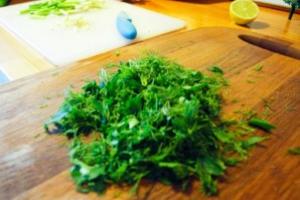FLOWERS LILY OF THE LILY
May lily of the valley scent
Dizzy in the spring
Coolness is sweet to him
And the shade in the silence of the forest,
Small flowers on a stalk -
That's all its beauty
Under the bush and along the path
It is scattered like dew.
There is no chic in it,
With your fragile tenderness
He conquers anyone
And the gods, and us people.
This short poem very accurately notes the features that nature has endowed on the seemingly modest lily of the valley flowers. Indeed, their favorite habitats are forest edges, where low bushes and trees create shade and coolness. You don't often see lily of the valley flowers in meadows and sunny glades. And regions with hot climates are not for them. Lilies of the valley prefer climatic zones with moderately warm springs, moderately warm summers and snowy winters. That is why their habitat includes most northern hemisphere - Europe (except for the southernmost regions), North America, some areas of Asia - China, Kuril Islands, Transbaikalia, Sakhalin. You can see lily of the valley flowers in any forest - coniferous, deciduous, mixed, where there is soil rich in humus and sufficient moisture for their successful growth.
WHEN LILY OF THE LILY BLOOM. PLANT DESCRIPTION

Lilies of the valley are one of the few plants that are monotypic, that is, having only one single genus - May lily of the valley. True, some botanists distinguish two more subspecies. One of them is the Keizke lily of the valley, named after the Japanese botanist Keisuke Ito, who lived at the very end of the 19th century. This flower was first described by the Dutch botanist Friedrich Mikel. The second subspecies is called mountain lily of the valley, growing mainly in the Appalachian mountains. The morphological differences in the subspecies are so insignificant that scientists often attribute these plants to the same May lily of the valley.
For a long time, lily of the valley flowers could not “find themselves” a suitable family. At the very beginning, botanists attributed them to the Liliaceae, then they created the Landyshev family for them, then they were moved to the Iglitsevs, and since 2013 they were sent to the Asparazhev family, where they still belong.
From the name itself it is very easy to understand when lilies of the valley bloom - of course, in May. At the beginning, at the end or in the middle - it depends on the region in which they grow and the weather conditions. In the northernmost regions they can bloom even in the first and early second decades of June. The duration of flowering of one flower in nature is up to two and a half weeks, and when picked for a bouquet and placed in a vase, it lasts about one and a half weeks.
Although lily of the valley flowers bloom in the last month of spring, they wake up from hibernation at the very beginning of spring, as soon as the soil warms up slightly. Their rich green sprouts look a little like needles sticking out of the ground. The plants that seem fragile at first glance are actually quite strong. They are able to easily break through a layer of soil and a layer of last year's dead leaves. Why do lily of the valley flowers look like needles when they emerge? Because their leaves are rolled up. In this form, they stretch upward to almost their entire thirty-centimeter height, gradually opening up and becoming like small funnels. Then the leaves straighten completely, and only after that a thin pedicel with 10-22 greenish buds begins to grow from the central bud.
The time comes, and they turn into white bell-shaped flowers, all inclined in one direction. Although the flowers are small, no more than 8-10 mm in diameter, when lilies of the valley bloom, they are very clearly visible against the background of green leaves, of which there are often only two. That is why in some areas lily of the valley flowers are called hare's ears. The leaves of the plant are quite large, elliptical, with a pointed tip and longitudinal veins, vaguely reminiscent of plantain leaves. Unlike this well-known medicinal plant, the leaves of lilies of the valley are not droopy, but always look upward, as if wrapping the stem. But at the base there are several other leaves - translucent, more like scales.
One of the highly valued features of lily of the valley flowers is their peculiar, very delicate, one might say, exclusive aroma, used in cosmetics, perfumes, household chemicals. In the middle of each flower there are stamens with a pistil. If pollination occurs, lily of the valley flowers produce small, attractive-looking red berries, which, unfortunately, carry a deadly threat to humans. However, some forest dwellers, for example, foxes and wolves, feast on them without the slightest unpleasant consequences.
In addition to flowers, the rhizome of lilies of the valley also deserves attention. It is thin but powerful, capable of spreading tens of meters under the soil surface. At the same time, it is repeatedly woven and intertwined, forming a single living organism. Along its entire length, the rhizome produces growth buds that become new plants. When lilies of the valley bloom, it seems that there are a lot of them in the clearing, a whole flower carpet, but in fact it can be just a couple of very overgrown plants.
LEGENDS ABOUT LILY OF THE LILY

Lily of the valley is scientifically called Lilium convallium, which is translated from Latin as “lily of the valley.” Why the valleys are quite understandable, but why the lily, you need to ask Carl Linnaeus, with whose light hand This is what the lily of the valley flowers are called. The Russian etymology of the name remains controversial. Some believe that the word “lily of the valley” is derived from “smooth”, because the leaves of the plant are indeed very smooth. Others attribute the name "lily of the valley" to "incense" because of its aroma. Still others claim that the “lily of the valley” comes from Polish language, where it sounds like “doe ears.” However, there are regions where this plant has completely different, even several unusual names. So, in Bohemia it is known as tsavka (a bun, which its flowers are somewhat similar to), in Saxony among the dear and tender lily of the valley a rather unpleasant name for scab, which comes from the fact that they successfully treat skin diseases; in Russia you can hear how lily of the valley is called young, culprit, shirt, forest tongue, silver, snow droplets, silvery dewdrops, forest bells.
There are even more versions about how lily of the valley flowers appeared in nature. These plants have been admired for centuries simple people and royalty, poets and scientists. It is not surprising that there are so many legends about him. In fact, every nation has its own. It is somewhat difficult to list them all in one article. Here are just a few of the most interesting ones.
Russian. Tells about love triangle- the sweet young man Sadko, who turned the heads of the earthly girl Lyubava and the sea princess Magus. Sadko chose an earthly beauty, and Volkhva began to mourn her unhappy love. Where her bitter tears fell, beautiful lilies of the valley grew.
Ukrainian. Lily of the valley flowers are nothing more than pearls that scattered on the ground when the beautiful forest nymph Mavka laughed from the happiness of knowing love. Many Ukrainians believe that the scent of lily of the valley helps the nightingale sing her love serenades.
English. The once glorious warrior Leonard fought with the terrible dragon Sin. Lilies of the valley grew where the blood of the fearless knight dripped.
Roman. Once upon a time, Diana, the goddess of the hunt, wandered into an unfamiliar forest. The fauns noticed her and began to pursue her. Lily of the valley flowers grew where the girl’s divine sweat dripped.
Fabulous. The Brothers Grimm came up with not only a fairy tale, but also an explanation for the appearance of lilies of the valley. In their opinion, these are nothing more than beads from Snow White's necklace, which she accidentally broke. Lily of the valley flowers became lanterns for good gnomes and houses for forest elves.
Almost lifelike. It’s as if once upon a time a handsome guy Lily of the Valley lived on Earth. Unfortunately for him, he fell in love with the flighty girl Vesna, who was very fickle in her feelings. Having caressed and reassured Lily of the Valley, she went to another, and the poor fellow began to suffer and cry. Lilies of the valley grew from his tears, and their berries turned the color of the young man’s devoted heart.
Christian. In some regions, lily of the valley flowers are called “tears of the Mother of God.” Allegedly, the tears of the Virgin Mary, which she shed on the Holy Cross, turned into pure, tender flowers, personifying purity.
INTERESTING FACTS ABOUT FLOWERS LILY OF THE LILY
This  many legends speak of popular love for this modest plant. Tchaikovsky really liked lily of the valley flowers, who even wrote a poem about them. Having bought a house in Klin, the great composer immediately planted lilies of the valley nearby.
many legends speak of popular love for this modest plant. Tchaikovsky really liked lily of the valley flowers, who even wrote a poem about them. Having bought a house in Klin, the great composer immediately planted lilies of the valley nearby.
These flowers were also loved by Henri Murget (French writer), Sofia Kovalevskaya, astronomer and at the same time doctor Nicolaus Copernicus. By the way, a portrait has been preserved where he is depicted with lilies of the valley in his hand.
There was once a custom to give a bouquet of lilies of the valley to the prospective bride. If she accepted him, then she accepted his advances. If she threw it on the ground, it meant she was refusing the unlucky groom. An echo of this ancient custom are lily of the valley flowers pinned to the wedding dresses of the bride and groom.
There was another custom - to celebrate the day of lilies of the valley by dancing around the fire. They say they lasted until the flowers withered. It is difficult to say whether this is true or fiction, but it is absolutely true that lily of the valley flowers were depicted on the coats of arms of several cities in France, Sweden and Norway, and in Finland they even became a symbol of the country.
In France, even before the advent of the holiday of all workers, May 1 was celebrated as the day of lilies of the valley. Then on the streets of cities one could meet dozens of traders offering modest fragrant bouquets to passers-by.
Nowadays, during the period when lilies of the valley bloom on the streets of cities, you can also see dozens of sellers with baskets of these lovely flowers. Precisely because they are picked in huge quantities, lilies of the valley are already included in the Red Book of certain regions of the USA and Russia.
The first spring flowers bring joy to a heart tired of winter colds. Lilies of the valley come to us along with spring, which has already fully come into its own and melted the snow with its breath. The description of the lily of the valley flower cannot be embellished for a simple reason - it is perfect! The persistent aroma of spring lily of the valley can turn anyone's head in the most literal sense of the word.
Description of the lily of the valley flower
May lily of the valley (Convallaria majalis) is a herbaceous plant. It does not have woody, persistent stems. Lily of the valley has soft stems, which die off along with the leaves after finishing
This miracle of nature cannot but arouse admiration. Graceful little bells with a wonderful unique aroma are the flowers of a forest beauty. The description of the lily of the valley flower as fragile and defenseless is not entirely true. At first glance, lily of the valley really seems very delicate and weak, but in fact it is strong, capable of covering large areas, and easily tolerates temperature changes and sudden changes in weather.
Description of the lily of the valley flower will not take much time. There is probably not a single person who does not know what this flower looks like. On a one-sided racemose peduncle, from 6 to 20 small bells of white or pale pink color are densely located. Although European gardeners have long been able to grow purple-red lilies of the valley with large double flowers and leaves with yellow stripes. Flowering begins in May and continues for 20 - 25 days.
After the flowers fade, tiny berries form on the stalk; in the fall they turn red. Birds and rodents love to eat these berries.
The leaves of the lily of the valley are large and beautiful, even without flowers they serve as a decoration for the flower garden. They are quite wide and similar to the ears of a doe; because of this similarity, the plant got its name “lily of the valley,” which means “doe’s ear” in Stavropol. Although this is not the only version of the origin of the name “lily of the valley”. when burned, it emits a smell very similar to the fragrant aroma of lily of the valley, which justifies the consonance of both names.
Types of lilies of the valley
Botanists have identified only one genus of lily of the valley, but the variety of subspecies is striking in its beauty. Plants belonging to different subspecies differ markedly from each other. Thanks to the work of breeders, varieties with different colors and flower sizes have now been developed.

There are three types of lilies of the valley found on the territory of the former Soviet Union:
Keiskeya lily of the valley.
. Transcaucasian lily of the valley.
. Lily of the valley May.
All of these types are used to treat diseases. The most common flowers are the May lily of the valley. It received its name in 1737, at which time a description of this plant was first published. Translated from Latin May lily of the valley means "lily of the valleys."
Area
Lily of the valley is listed in the Red Book due to a sharp reduction in its distribution area. This spring Flower is considered aggressive and can create entire colonies of fragrant bells, but by picking just one flower, you can destroy an entire colony. If you look superficially, it seems that lilies of the valley grow everywhere, but in fact the plant is inexorably disappearing. The construction of settlements in their place also led to such a deplorable situation. The illiterate collection of lily of the valley flowers as medicinal raw materials also caused significant damage to the forest beauties. Flower lovers, planting lilies of the valley on their plots, receive the delicate beauty of these plants in the spring and at the same time save an endangered species.
Where to “settle” lily of the valley on your site
White lily of the valley is perennial, quite unpretentious, but if you decide to “plant” such flowers in your garden, then you need to choose a place that is hidden from the sun. Having settled in the shade, the lily of the valley will delight the owners of the site with its beauty for decades. When kept cool, the plant will bloom for five weeks.

Lily of the valley, thanks to its underground stems and roots, forms dense colonies. Therefore, in order to avoid unwanted growth, the planting site must be surrounded by a strong edging, using stones or bricks half buried in the ground.
Lilies of the valley are used as decorative and alpine slides in containers or flowerpots. Thus, they can easily be moved to shaded areas and replaced with other plants after flowering, although in addition to beautiful flowers, lily of the valley will decorate the flower garden with its equally attractive leaves, which serve as an excellent base background for tall flowers.
Growing
Lily of the valley can live in one place for about 10 years, as mentioned earlier, this plant is unpretentious, it feels great in any cool place. The soil in the flower bed for lilies of the valley should be rich in organic matter. Before planting the plant, the soil must be dug to a depth of 25 cm and fertilized with rotted manure or peat-humus compost (2 kg per 1 sq. m). Lilies of the valley are being planted in early spring and in the fall, while adhering to the main rule - increased watering immediately after planting.
Fragrant beauties reproduce by seeds and division of rhizomes. When dividing the roots, take pieces 6-8 cm long, and there should be several apical buds on them. When planting shoots, you need to ensure that the roots do not bend and the sprouts are above the surface at a height of no more than 2 cm. Planting must be done linearly with a distance of 8-10 cm.

When using the seed propagation method, you need to take into account the fact that the seedling hides underground for the first year. In the second spring, the plant shows its first leaf, which is tightly curled and resembles a spear peeking out from under the ground. As the lily of the valley leaf grows, it unfolds, giving way to a second one. The resulting leaves accumulate water in the funnel they create, which feeds the roots. By the second autumn, the plant already has a plump rhizome, from which new shoots grow.
Care
Caring for lilies of the valley is simple, the main thing is to water them in the summer during drought. The plant is not afraid of winter cold, so there is no need to wrap it up against frost. With the onset of spring, the flower bed with lilies of the valley needs to be cleared of dead leaves. New shoots grow on their own.

A little history
The spring flower, called lily of the valley, was for many centuries considered the flower of the Germanic goddess of the rising sun, Ostar. When spring fully came into its own, young girls collected fragrant bouquets of lilies of the valley and carried them to the temple to appease the sun goddess. In the era of Christianity, the lily of the valley turned from a flower representing love and happiness into a flower of sadness; it was no longer presented on holidays; instead, it was constantly depicted on canvases with the Virgin Mary. In mythology, the lily of the valley is the flower of loss. Its description is identified with the blood of St. Leonard and with the tears of the Blessed Virgin, who mourns the death of her son.

In the sixteenth century, thanks to the French aristocrats, the lily of the valley regained its honor and glory. The flower was appreciated and began to be used to decorate front gardens and parks. Nowadays, on the first Sunday of May, the Lily of the Valley holiday is celebrated. In the Russian Empire, only in the eighteenth century did they begin to grow and plant this beautiful delicate plant in flower beds.
Where spruce paws learned the innocence of the birch,
Where a spring and brisk stream growls under the ravine,
White tears scattered at the edge of the lilies of the valley,
Like the pearl beads of my dear girl.
Description and features of lilies of the valley
As soon as the spring sun warms the earth, in the first thawed patches their snow-white and fragrant green noses begin to show lily of the valley flowers. Their aroma is so bright and individual that it is impossible to confuse it with any other. The lily of the valley flower is rightly called the goddess of spring.
Lilies of the valley, in their essence, are not ornamental plant. They are simple and unpretentious, and this is their main charm. They grow in coniferous and deciduous forests, on soil rich in humus. Lily of the valley prefers slightly shady places, but they also thrive in sunny meadows and forest edges.
Geographically, lilies of the valley can be found in regions with moderate climatic conditions, mainly in the regions of the Northern Hemisphere of the planet.
Snow-white lilies of the valley live in the Caucasus and Asia Minor; they get along well with the traditions of China. Lilies of the valley indicate the arrival of spring in the mountainous Crimea and on the coasts of the Amur; they are fragrant on Sakhalin and the Kuril Islands.

In the photo there are lilies of the valley flowers
Where natural virginity is untouched by man, you can see entire meadows strewn with white fragrant lily of the valley bells. For those who have not seen the natural beauty of these marvelous, fragrant, May flowers, just look in the photo of lily of the valley flowers.
Breeders have developed several varieties of garden lily of the valley; it is larger in size and less fragrant than forest lily of the valley. There are varieties of double lily of the valley and even lily of the valley with a pink tint.
To find out more what a lily of the valley flower, You can refer to the flower encyclopedia. Lily of the valley is a perennial that belongs to the asparagus family of plants.

It has long and creeping rhizomes and 2-3 large, dense leaves at the base. The lily of the valley peduncle reaches 30 cm in height. During the flowering period, it is decorated with a single-row cluster of white (less often pale pink) drooping flowers, shaped like the jagged caps of small forest gnomes.
The main flowering time is early spring to early summer. According to established tradition - lilies of the valley are the first flowers in May. After flowering, dense red balls (berries) form in place of the flowers.
They serve as a repository for the plant, storing and ripening future seeds. Lily of the valley flower in the forest is a confirmation of purity; lilies of the valley do not bloom in environmentally polluted conditions.

Planting and propagation of lilies of the valley
Many gardeners want to have perennial lily of the valley in their garden. To grow lily of the valley on personal plot you need to know some of the nuances of its planting and care.
For example, we cannot dispute the fact that a forest lily of the valley dug up in the forest and planted near a house will never delight you with its flowering. At best, it will remind of itself with foliage, and at worst, it will die completely.
It's all about the soil. The forest lily of the valley is demanding of the natural substrate on which the roots of its ancestors rested; no gardener is able to create such conditions for it.

There is a way out - this is the garden lily of the valley. But even here there are difficulties. The soil for garden lily of the valley needs special, slightly acidic, leafy soil with admixtures of manure, peat and humus (compost).
The site for lilies of the valley is prepared in advance, preferably 1 year before the intended planting. It is cleared of weeds, loosened, and sometimes legumes are planted on it, the roots of which will serve as super-vitamins for the future resident named lily of the valley.
There are two ways to plant lily of the valley. The first is by seed, and the second by dividing maternal rhizomes. The second method is considered more convenient and functional. The rhizome must have a mother sprout with a diameter of 0.5-0.6 cm.

In the photo there are berries with lily of the valley seeds
It is this option that can cause lily of the valley to bloom in the second year of life. When planting lily of the valley, you need to pay attention to the roots and make sure that they lie flat and do not have bends, and that the sprouts are not covered with soil more than 1.5-2 cm.
The plant is planted at a distance of 10 cm between flowers horizontally, and vertically the rows are 25 cm apart from each other.
The sowing method of lily of the valley is carried out before winter, the first leaves will appear in the spring, flowering occurs in the third year of plant growth. In one place, lilies of the valley in the garden live up to 5 years.
If the soil is too poor and dry, they will become smaller and the number on the peduncle will be less and less every year. Lily of the valley does not like excess moisture; being an unpretentious inhabitant of the forest, it can wait for the next watering, but from excess water its roots rot.
Best place for planting - partial shade, under trees that leaf out late. In strong shade, lily of the valley blooms less actively.

In the photo there are rhizomes of lilies of the valley
Caring for lilies of the valley
Lilies of the valley are not at all demanding creatures when it comes to care. Enough to feed them organic fertilizers at the end of summer, after the flowering period ends.
Water in dry times, preferably with rainwater rather than tap water. Weed out weeds in a timely manner. In the spring you will need to cover the lily of the valley with compost, peat or last year's manure.
Frost-resistant, do not require additional shelter. Recommended transplantation and rejuvenation once every 5 years. At good care Lily of the valley is able to actively reproduce; its roots and seeds can spread throughout the entire area and fill it like a weed. To prevent this from happening, you can fence off the flowerbed with lily of the valley with sheets of iron or slate (by deepening them into the ground).
Lily of the valley diseases and pests
Garden lilies of the valley are susceptible to some common diseases vegetable crops, For example, gray rot. Treatment is the use of fungicides.

In addition, when growing on a personal plot, lily of the valley is susceptible to nematodes, as well as other pests, including ratchets and common sawflies.
If a nematode is found on a lily of the valley, no matter how sad it is, the diseased plants should be destroyed. Hookworm is a contagious disease and can spread throughout the entire area. The best prevention is timely treatment against pests and destruction of weeds.
Attention! Lilies of the valley have a strong aroma and may be contraindicated for people prone to allergies; their smell can also cause slight dizziness due to the fact that they are considered poisonous.
Children should not be allowed to play with these, as children's curiosity can lead to unforeseen consequences. Particularly poisonous and dangerous are the ripe seed berries of lilies of the valley, which attract attention with their bright color and shape.
May bouquets of lily of the valley flowers have long been considered an expression of tenderness and purity of relationships; they are always pleasant for girls and women of all ages.

Unfortunately, there are fewer and fewer lilies of the valley in the lap of nature, the reason for this is the ruthless destruction by man of the beauty of his native land. The creation and restoration of which must begin with oneself and be nurtured in one’s children.
Attention! Forest lily of the valley flowers are listed in red Russia. Of course, no one will punish you for a small bouquet of lilies of the valley carefully collected in a forest clearing as a gift to your beloved.
However, collecting forest lilies of the valley for commercial purposes is punishable by law and is considered poaching. Remember that if you buy a bouquet of these cute and fragrant flowers at a station or in an underground passage, you are an accomplice to the crime.
Buy lily of the valley flowers for planting on a personal plot, it is possible in specialized stores or try to grow it yourself from seeds.

In the photo there is a bouquet of lilies of the valley
Lily of the valley flower meaning happened historically. No matter where in the world the lily of the valley grows, it is always a symbol of tenderness and purity. It doesn’t matter what language a man speaks or what color his skin is, but when he hands over a bouquet of lilies of the valley to his beloved, he wants to talk about love and fidelity.
One of the most beautiful forest plants is May lilies of the valley. Description of this gentle white flower often found among poets and novelists, it is painted on canvas by artists. It has many popular names: hare's ears, wolf's violet, silver. The flower grows in deciduous trees and creates vast white-green meadows during the May flowering period.
Lilies of the valley. Description of the species
Forest lily of the valley is perennial herbaceous plant. Its habitat is almost the entire territory of Europe, Siberia, the Far East, as well as the Japanese islands. True, some experts classify Japanese and Far Eastern flowers as a different subspecies.
According to the botanical classification, it belongs to class A (Convallaria previously belonged to it) and was recently replaced by the asparagus family. The main reason is fetal incompatibility of this flower characteristic appearance for the family. In true lilies the fruit is a capsule, and in the lily of the valley there is a berry.
Reproduction in nature
Its reproduction occurs using the root system. The roots are very thin and quite long. Possessing a great ability to branch during growth, convalia is able to quickly form an entire clearing from one planted bush. Moreover, where the lily of the valley grows, there are practically no others, since it completely displaces them. Life expectancy is more than forty years.
A shoot of two leaves enclosed in a rosette begins to grow from the root. The leaves are elongated and pointed at the tips, juicy, bright green. In the root area they are framed by small scales. In the first year after the leaves appear, there is no flowering. The flower appears only in the second or even third year.

Wonderful flowers
Lilies of the valley have soft white, fragrant flowers. Appear depending on the place of growth in May or June. First, a thin green arrow - a peduncle - begins to grow from the leaf rosette. Small green buds gradually appear on it, forming a one-sided loose flower cluster. The flowers themselves are shaped like a six-pronged bell. white. The plant blooms for a long time - 2-3 weeks. After flowering, fruits set in the form of an orange-red berry. They reach full maturity by early September. Berries
Variety of varieties

Convalia is quite popular garden flower. It has been cultivated since the 16th century and to date quite a lot of varieties have been bred. They are distinguished by the richness of the flower color, for example, the Rosea variety has a soft pink bell, as well as the number of flowers on the peduncle, for example, the Flore Plena variety has a lot of them a large number of. In addition, there are lilies of the valley that remain beautiful even after flowering has ended. For example, Convallária Albostriata has large green leaves with white veins. They are widely used to decorate flower beds that are located in the shade.
How to grow it in your own garden?
In nature, lilies of the valley grow in the forest, in clearings and forest edges. How to grow lily of the valley in your garden? This flower is planted in autumn period, but can be planted in spring. A shaded area of the garden is selected for planting. Since the flower reproduces using the root system, this method is more preferable. However, planting a flower using seeds is also permissible.

Where does lily of the valley grow? It can grow in almost any soil, but is poorly accepted in wetlands. When planting, the depth of the root shoot is also taken into account: it should not exceed three centimeters. It is also not recommended to thicken the planting - this can lead to seedlings being damaged by gray rot.

Caring for the plant is simple. Lilies of the valley, the description of which characterizes them as shade-tolerant and frost-resistant plants, love abundant watering and periodic feeding mineral fertilizers. It must be remembered that convalia can multiply quickly. Therefore, the plantation where lily of the valley grows must be cleaned and thinned at least once every 2 or 3 years. Otherwise, flowering may stop.
Description of pharmaceutical properties
Lily of the valley is a medicinal plant. All its parts contain a large amount of cardiac glycosides, which are characterized by high cardiac and biochemical activity. These are mainly convallotoxin and convalloside. In addition to good therapeutic properties, they are unstable and therefore do not accumulate in human organs and tissues. Therefore, extracts obtained from the processing of plant raw materials are used in medicines for the treatment of heart diseases. In addition, convalia has a good calming effect, so it is often prescribed in herbal preparations in combination with valerian, motherwort, hawthorn and their analogues.
How to collect and dry this medicinal plant?
Lily of the valley, a description of the pharmaceutical properties of which confirms that it is valuable medicinal plant, are harvested in almost all regions. Almost all of its ground part is used for this. The exception is lily of the valley berries. They are poisonous and folk medicine do not apply.

The main harvesting time occurs during the period of active flowering. It is better to do this in dry weather after the dew has disappeared. Since the flower is protected by the state, there are strict rules for its collection. It is forbidden to pick the plant so as not to damage the root system. It only needs to be carefully trimmed using a knife. In this case, the height of the remaining stem should not be less than 5 cm. If flowers are being harvested, not the entire brush is cut off. You need to surround at least 3 cm from the bottom flower. If lilies of the valley are collected in the forest, then it is forbidden to cut off all the plants in the clearing. Cutting is permissible at the rate of one plant per square meter.
The description of the drying technique is very simple. The grass is laid out to dry on the day of collection, not allowing it to wither, since this would cause all of it to be lost. useful material. It is better to do this in specialized electric dryers. If they are not available, dry them in well-ventilated areas until ready. Then stored in canvas bags in a dry, dark place.
I think any girl or woman loves flowers. I especially like lilies of the valley. This delicate plant with tiny white flowers symbolizes the arrival of summer. My son recently brought a drawing of lilies of the valley from school, it was the best bouquet. Much is known interesting information about this plant, which I will now share with you.
Lily of the valley and its types
Lily of the valley flowers resemble bells. They are white and have small size. Lily of the valley can be recognized not only by its appearance, but also by the unique aroma of flowers. After the flowering period ends, a small red fruit. Under no circumstances should they be eaten. Both the fruits and the lily of the valley flowers themselves are poisonous to us.

Many people consider lily of the valley to be a monotypic plant, that is, there is only one species. But it is not so. Known several of its types:
- lily of the valley;
- Keizke's lily of the valley;
- mountain lily of the valley.

May lily of the valley meets in European countries, including quite a large part of Russia. You can meet this plant in the forests different types. Lily of the valley Keizke has a slightly different territorial location. It can be found in Russia on the territory of Transbaikalia, Far East, Primorye. In addition, this type of lily of the valley is found in Northern China and Japan. mountain lily of the valley You won't be able to find it in Russia. It only grows in the territory North America .
When and how long do lilies of the valley bloom?
Lilies of the valley, growing in the wild or in some botanical garden, begin to emerge at the same time. This happens with the onset of spring. At this time they begin to appear first leaves, and a little later you can see the stem on which small white flowers will bloom in the future.

You can already see the lily of the valley blooming in the middle of May or in the first half of June. You won’t be able to admire the beauty of lily of the valley for long. They only bloom for about 10–20 daysth. The flowering period depends on the climate of the area where the lily of the valley grows.
Lily of the valley and customs
Lily of the valley is considered for a reason symbol of tenderness and loveAnd. Previously, one custom was associated with this flower. The groom gave a bouquet of lilies of the valley to the girl he liked. If a girl accepted the presented bouquet, it meant that she agreed to the young man’s advances. If the girl threw the received bouquet on the ground, then this gesture meant a refusal to the groom. Now the brides and grooms on the wedding day they sometimes pin it on their outfits lily of the valley flowers.

Perhaps not everyone knows that In France, May 1st is celebratedLily of the Valley Day. On this day you can meet traders everywhere with bouquets of these flowers. This tradition has been observed in France for several centuries.








